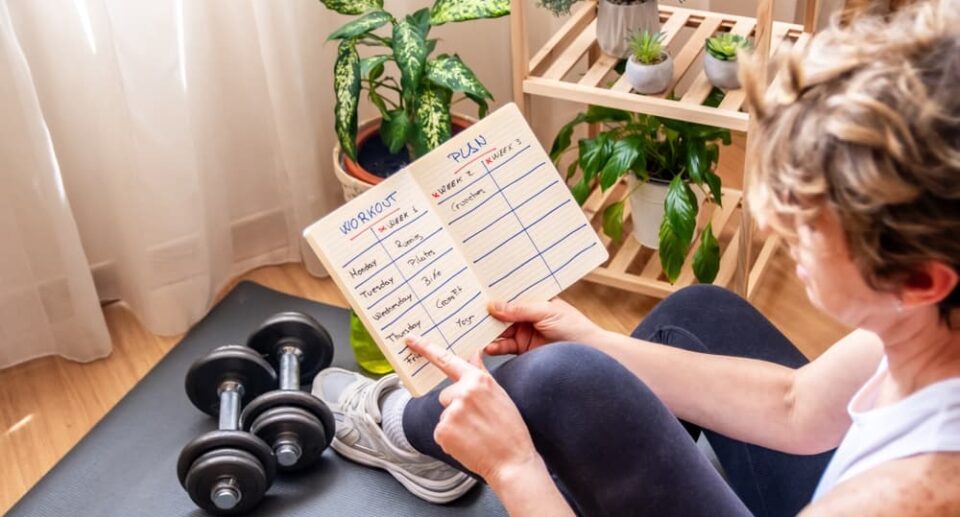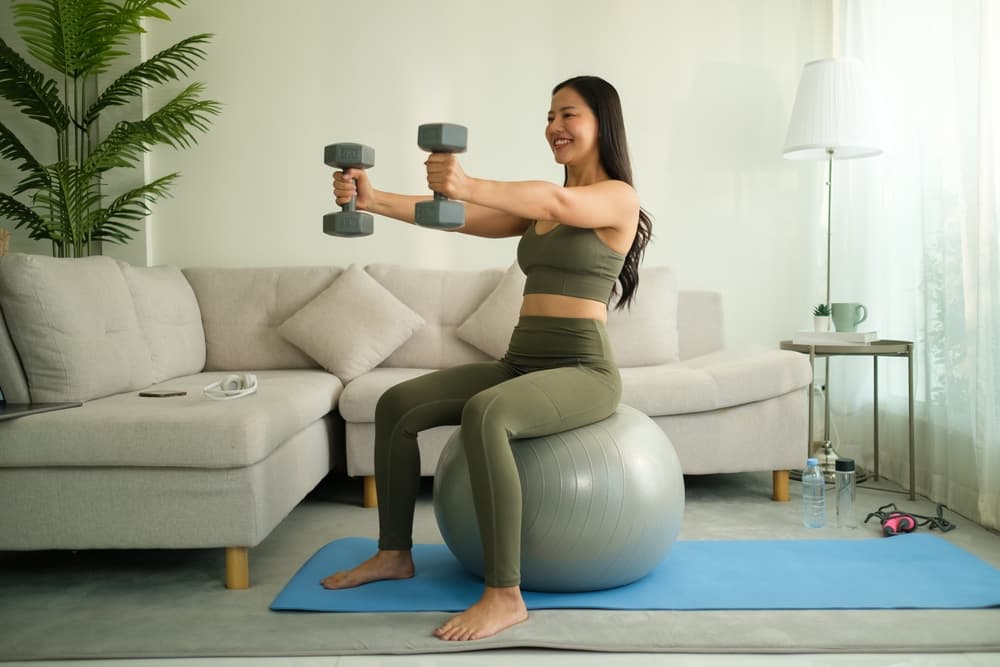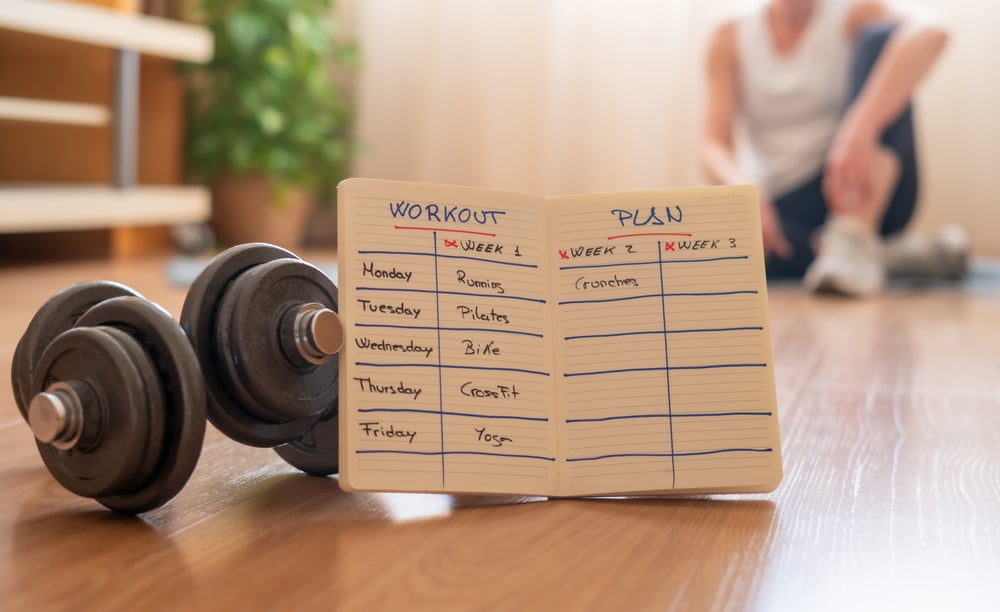Best weekly workout schedule for balanced fitness


Fitness is not just about the gym or lifting heavy weights. True health and strength come from balanced fitness, which includes the right combination of cardio, strength training, flexibility, and adequate rest. But many people don’t know how to create a workout routine throughout the week that maintains the right balance between body, mind, and energy. On the one hand, cardio strengthens our heart, while on the other hand, strength training increases muscle building and metabolism. This is combined with yoga or flexibility exercises, which maintain mental peace and body mobility.
A study by Harvard Health Publishing has shown that regular balanced workouts during the week not only significantly increase physical fitness but also mental well-being. Therefore, a properly planned weekly workout schedule can bring long-lasting strength, confidence, and good health to your life.
5 essential components of balanced fitness
Strength training
It is very important not only for building muscle, but also for increasing overall body strength, bone density, and improving metabolism, and using weights, resistance bands, or your own body weight to exert pressure on your muscles.
Benefits:
Increases and maintains muscle mass.
Strengthens bones, which reduces the risk of osteoporosis.
Helps burn calories by increasing metabolism.
Ideal time to do: At least 2 days a week, and the same muscle group should be given 48 hours of rest and recovery.
Examples: Squats, deadlifts, push-ups, planks, dumbbell rows.
Cardiovascular exercise
This is essential for strengthening the heart, lungs, and circulatory system. It increases your endurance.
Definition: Exercise that increases your heart rate and maintains it for a long period of time.
Benefits:
Improves heart health and keeps blood pressure normal.
Increases endurance and stamina.
Helps control weight by burning calories.
Ideal time to do:
Moderate-intensity cardio: 150 minutes a week (e.g., brisk walking for 30 minutes 5 days a week).
Vigorous-intensity cardio: 75 minutes a week (e.g., running or swimming).
Examples: Brisk walking, jogging, running, cycling, swimming, high-intensity interval training.
Flexibility and mobility
Many people neglect this area, but it is very important for preventing injuries and maintaining normal joint function. Improve the elasticity and range of motion of muscles and joints.
Benefits:
Improves body posture.
Reduces muscle tension and joint pain.
Significantly reduces the risk of injury.
Ideal time to do: Daily or after each workout session. Stretching should always be done on warm muscles.
Examples: Static stretching (after workout), dynamic stretching (before workout), yoga, Pilates.
Core Training


The ‘core’ or central part of the body stabilizes the spine and acts as the foundation for all types of movement. A strong core means a strong body. Strengthening the abdominal muscles, lower back muscles, and pelvic muscles.
Benefits:
Increases body balance and stability.
Helps reduce lower back pain.
Helps increase the body’s power output during other exercises.
Ideal time to do: 2 to 3 times a week, or at the end of each strength training session.
Examples: Planks, side planks, mountain climbers, bicycle crunches.
Rest and recovery
This is the most important, but often overlooked, part. Muscle is built and strength returns during rest. Without it, you can easily overtrain and get injured. Giving the body enough time to repair muscle tissue and restore mental energy.
Benefits:
Speeds up muscle growth and muscle repair.
Improves workout performance.
Relieves physical and mental fatigue.
Ideal time to do: 1 to 2 days a week of complete rest or light activity. Get 7-9 hours of sleep every night.
Recommended weekly workout routines for different levels
Beginners’ routine (Beginners: 3 days a week)
The goal for beginners should be to become familiar with basic body movements and strength training. Here, the focus is on fewer days of workouts and more rest.
Day 1
Full-body strength (A)
45-60
Strength training: Bodyweight squats, push-ups (on the wall/knees), dumbbell rows, planks.
Day 2
Rest/active recovery
20-30
Brisk walking, light stretching, foam rolling.
Day 3
Cardio & Core
30-40
Brisk walking/jogging (20 minutes), basic crunches, leg raises.
Day 4
Rest
–
Complete rest.
Day 5
Full-Body Strength (B)
45-60
Strength training: Lunges, overhead press (light dumbbells), bodyweight deadlifts, side planks.
Day 6
Flexibility & Mobility
30
Yoga or a long static stretching session.
Day 7
Rest
–
Complete rest.
Beginner tip: Focus on form. Start with light weights or just bodyweight and do 8-12 reps per set.
2. Intermediate Routine (4-5 days a week)
At this level, workouts are divided more specifically into an “upper/lower split” or strength and cardio. Both intensity and volume are increased.
Day 1
Upper Body Strength
60-75
Strength Training: Bench Press, Pull-Up/Lat Pulldown, Shoulder Press, Bicep Curl, Tricep Extension.
Day 2
Lower Body Strength (Legs)
60-75
Strength Training: Barbell/Dumbbell Squat, Romanian Deadlift, Leg Press, Cuff Raise.
Day 3
Cardio & Core
30-45
Cycling or Swimming (Moderate Intensity), Plank, Bicycle Crunches.
Day 4
Rest
–
Complete rest or active recovery.
Day 5
Full-body circuit/HIIT
30-40
Burpees, jump squats, mountain climbers, kettlebell swings (with high intensity).
Day 6
Upper-lower split (reps)
60-75
One upper body or lower body session (different exercise from day 1).
Day 7
Flexibility and rest
30
Yoga or a long stretching session.
Intermediate tip: Follow the principle of progressive overload – gradually increase the weight or number of repetitions. Aim for 6-10 repetitions per set.
3. Advanced routine (5-6 days a week)
This routine is designed to target muscle groups more specifically (“Push/Pull/Legs” split). Both intensity and volume are maximized.
Day 1
Push Day
60-90
Chest, Shoulders, Triceps – (Heavy Press, Flyes, Overhead Press).
Day 2
Pull Day
60-90
Back & Biceps – (Deadlift, Row, Pull-ups, Bicep Curl).
Day 3
Legs Day
60-90
Legs – (Squat, Lunge, Hamstring Curl, Cuff Raise, Core).
Day 4
Cardio & Active Recovery
45-60
Long duration moderate cardio (e.g., running) + focus on flexibility.
Day 5
Push Day – Repeat
60-90
Repeat the Push Day exercises at different angles and with moderate weights.
Day 6
Pull Day – Repeat
60-90
Repetitions of the exercises from Pull Day with different angles and moderate weights.
Day 7
Rest
Complete rest or active recovery (light walking/stretching).
Advanced Level Tip: Keep the intensity high. Set to near failure. Adequate sleep (7-9 hours) and proper nutrition are essential to get the desired results from this routine.
General Rules for Any Level:
Warm-up


5-10 minutes at the beginning of each session
Prepares muscles, increases blood flow, and reduces the risk of injury.
Cool-down
5-10 minutes at the end of each session
Normalizes heart rate and relaxes muscles to prevent lactic acid buildup.
Rest
Give the same muscle group 48 hours of rest.
Essential for muscle repair, growth, and strength recovery.
Drinking water
Before, during, and after workouts.
Maintains body hydration and improves performance.
Tips for creating a successful routine
Goal setting and routine creation
Set SMART goals: Make your goals specific, measurable, achievable, relevant, and time-bound. For example: “I will lose 5 kg in the next 12 weeks” or “I will be able to do 10 push-ups in the next 3 months”.
Start realistic: If you are new, don’t do a 5-day-a-week training routine. Start with 2-3 days a week and gradually increase the number of days.
Set a time: Block out a specific time in your calendar for your workout. Treat it as important as any other important meeting or appointment.
2. Progressive overload
Continuous challenge: If you don’t continuously challenge your body, it will adapt to the same situation, and your progress will stop. This is called ‘plateau’.
How to implement: Change your workout every week or every two weeks:
Increase the weight.
Increase the number of repetitions or sets.
Reduce rest time.
Add more difficult exercises or variations.
3. Prioritize rest and recovery
Rest: Don’t train the same muscle group two days in a row. Building muscle requires at least 48 hours of repair time.
Sleep: Ensure 7 to 9 hours of quality sleep every night. Muscle repair and hormone secretion processes are normal during sleep.
Active recovery: On rest days, do light activities such as walking, swimming, or light stretching instead of being completely inactive. This helps reduce muscle soreness by increasing blood flow.
4. Nutrition and hydration


Nutrition time: Ensure proper nutrition before and after your workout. Carbohydrates will provide energy before the workout, and protein will help repair the muscles afterward.
Drink water: Drink enough water throughout the day. Dehydration can seriously affect your strength and performance and increase the risk of injury.
5. Warm-up and cool-down
Warm-up: Do a 5-10 minute dynamic warm-up (such as jumping jacks, arm circles) before each workout. This prepares your muscles and joints.
Cool-down: Do 5-10 minutes of static stretching or yoga at the end of your workout. This helps to normalize your heart rate and relax your muscles.
6. Keep it varied
Break the boredom: Doing the same routine day after day can lead to boredom and loss of interest.
Add something new: Add a different type of exercise to your weekly schedule from time to time. For example, yoga, dance class, or hiking. This activates different muscle groups and keeps you mentally fresh.
By following these tips, you can create a successful, sustainable, and enjoyable fitness routine.
FAQ
Q: How many rest days should I include in a balanced weekly workout schedule?
A: Ideally, include 1-2 rest or active recovery days each week to allow your muscles to repair and prevent burnout.
Q: Can beginners follow the same weekly workout plan as advanced exercisers?
A: Not exactly. Beginners should start with lighter intensity and shorter sessions, then gradually increase duration and difficulty as fitness improves.
Key Takeaways Best weekly workout schedule for balanced fitness
A balanced weekly workout routine is not just about physical exercise; it’s a commitment to yourself. Cardio, strength, flexibility, and rest are the four elements that make up a complete fitness lifestyle. Whether you’re a beginner, intermediate, or advanced, the key is to be consistent and listen to your body. A study by Harvard Health Publishing found that regular, balanced exercise not only improves physical fitness but also mental health. So, small steps every day can lead you to long-term health, strength, and confidence.
Start small, stay mindful, and create your calm corner for a happier work life.
“Ready to level up your wellness? Subscribe to CoreWellFit now.”









